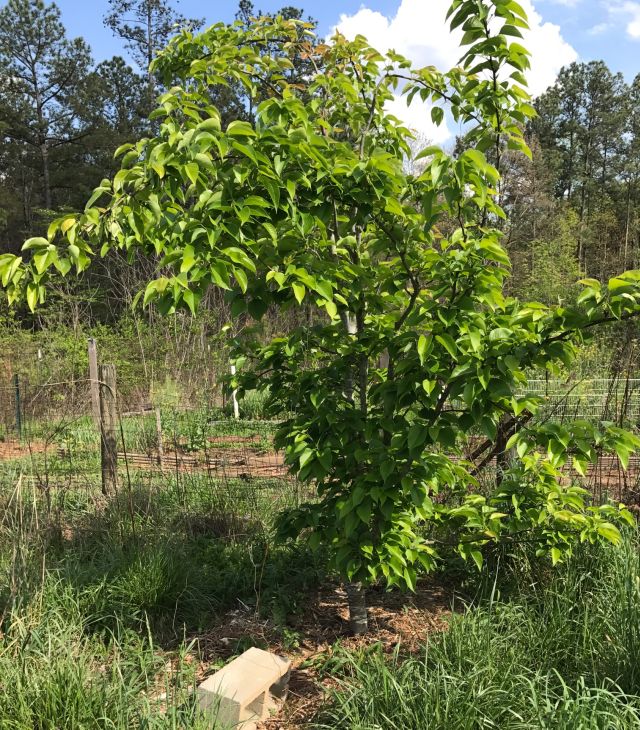I noticed the leaves of my tomato plants in the greenhouse had white blotches.
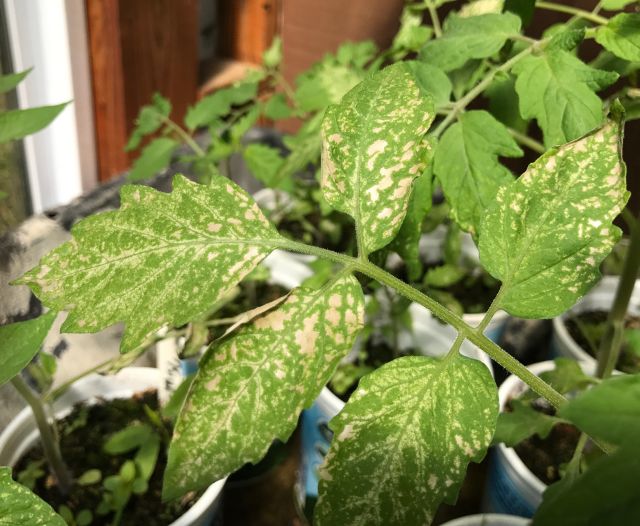
It has warmed up a lot and I suspect greenhouse heat and light is too much for the plants. I could shade them or plant them. A quandary is the average last frost day for Canton, a town to the south, is 4/21 to 4/30 and for Jasper, a town to the north, is 5/1 to 5/10. So on April 10, what should I do? The forecast anticipates no cold weather for the next 10 days. I decided to chance it and planted out 33 tomatoes. If they are not injured by cold them I should have tomatoes before July 4, which is my annual goal. If some are injured, I have plants in reserve. The varieties are: Black Krim (4); Black Cherry (3); Whopper (6); Cherokee Purple (8); German Johnson (5); Juliette(5) and Misc – unidentified (2). So most are heirlooms. The Whopper is a stalwart hybrid producer which was both the first and last to produce in 2016 and, although not as tasty as the heirlooms, does extend the season. The Juliette I collected from last year’s seed and will be interesting to see how they do. The seed for the Black Cherry was purchased in 2015, the remainder in 2016 or 2017. This will be my first tryout of German Johnson tomatoes.
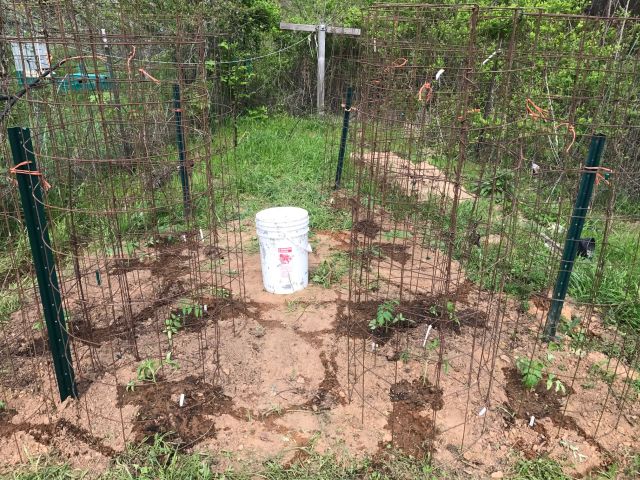
I use different locations each year for the tomatoes and I experiment with different layout techniques. Last year I spread black plastic and inserted the plants in slits in the plastic. Now this may work if you have irrigation lines beneath the plastic which enable diffuse watering, but with my method the water inflow was concentrated where the plant slit was and I had problems with blossom rot which occurs with uneven watering. After introducing additional water inlets the problem was solved. I previously minimized weeding with use of mulches (especially newspaper), but this year I will weed. I use wire cages which I made in April 2012 from rolls of wire remesh (5ft by 150ft) – see my post dated 4/12/2012. They have held up well and this will be my 6th year of use. In the pic above I formed a half circle with double cages along 2 of the edges.
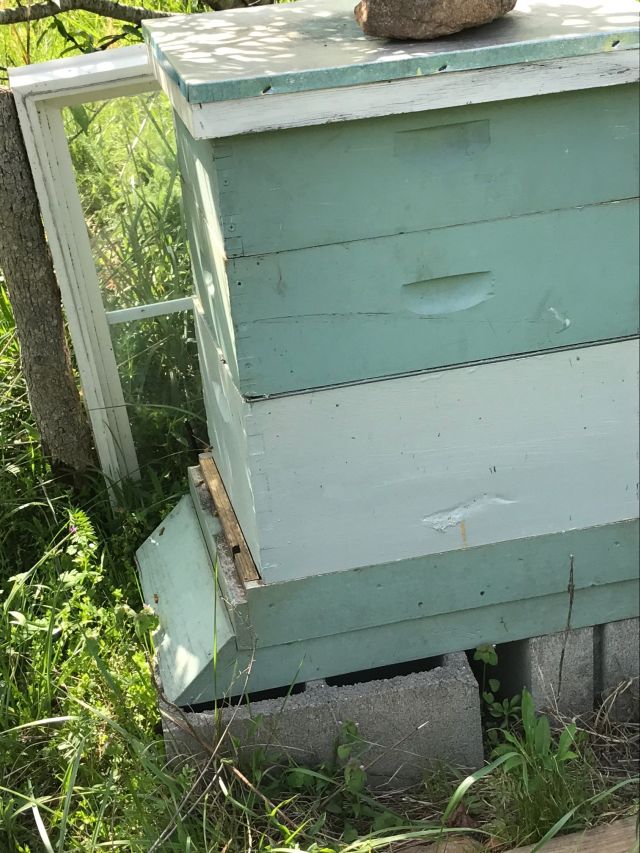
In my March 17, 2017 post I mentioned installing 2 packages of bees. I opened up the hives a week ago not to look for the queens but to look for evidence that they were functioning ok. And I was pleased to see bee larvae in the comb of each hive. Now even worker bees can produce eggs but these will all become drones who do not contribute to the nutrition or maintenance of the hive. So how to tell if the larvae are produced by a real queen or by worker bees? The latter do not uniformly fill all the cells with eggs, so if all the adjacent cells are filled with larvae this is a good sign they were deposited by a queen. And they all were.
With new worker bees on the way it was time to expand the size of the hive from the brood box, where the queen resides, to a couple of added supers where the bees can produce honey, which you can see in the above picture.
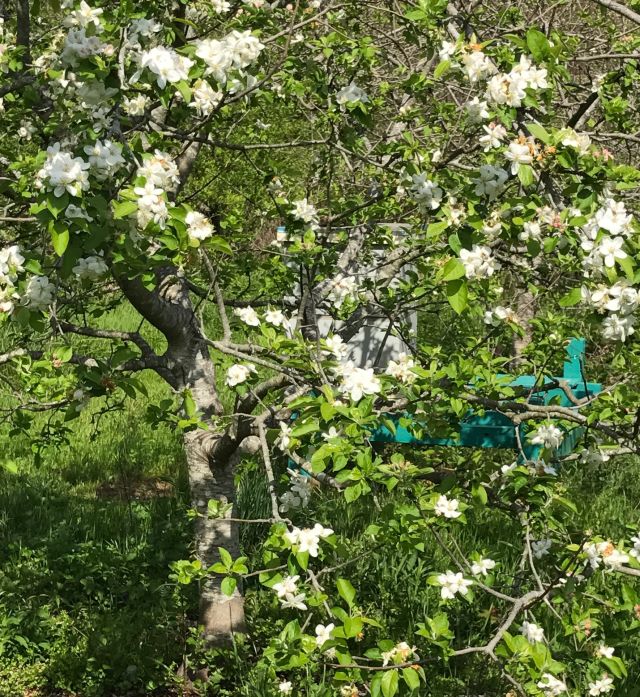
I allowed some of the vegetables to flower and their yellow flowers provide food for the bees and are attractive.
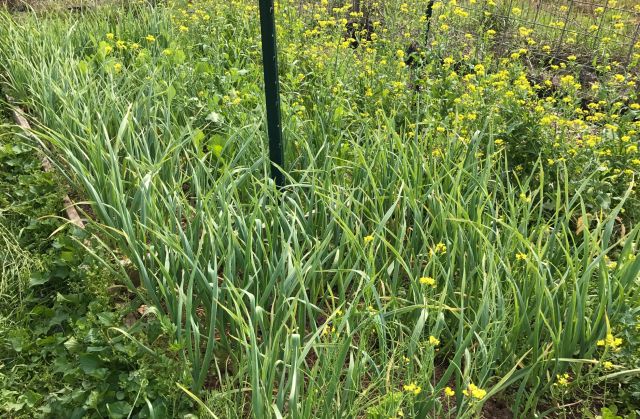
And asparagus are beginning to surface. As an experiment I have added strawberry plants to the asparagus bed and will see how they do together.
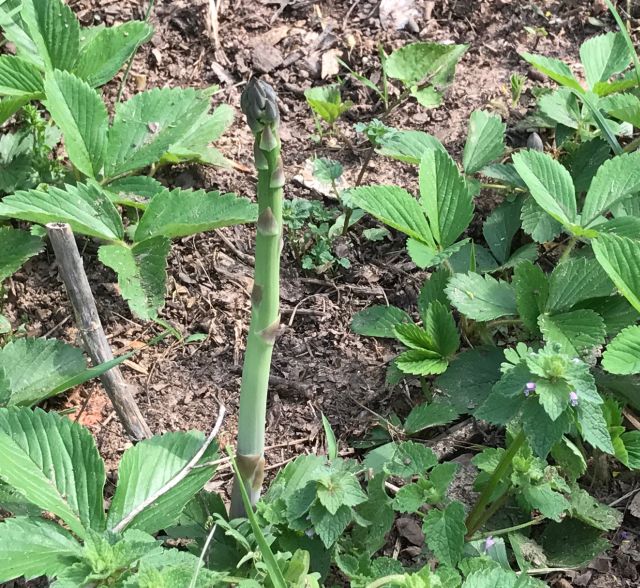
Finally, our most prized fruit tree, the Giant Korean pear which has never disappointed and seems immune to pests. Since all my pears have an upright habit I train them to horizontal with wires stretched to the ground.
